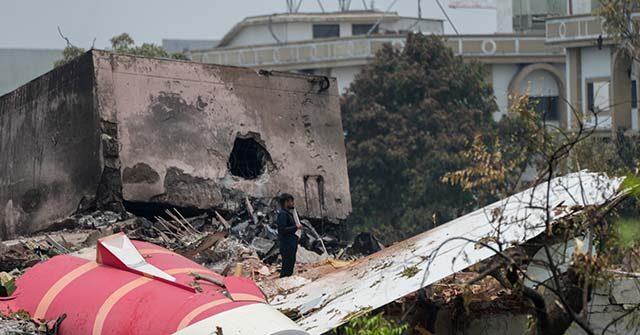Vishwash Kumar Ramesh, the sole known survivor of the horrifying Air India Flight AI171 plane crash on Thursday, is conscious in the hospital and describing how he managed to leap to safety from the crash that killed all 241 of his fellow passengers and crew.
Ramesh, a 40-year-old British national who lives in Leicester, had one of the forward seats in the hefty Boeing 787 Dreamliner when it took off from Ahmedabad Airport in the western Indian state of Gujarat. The flight was bound for London’s Gatwick Airport.
Ramesh was traveling with his brother Ajay, who was seated in a different row of the plane and was killed in the crash. The cause of the crash is not yet known – and neither is the incredible sequence of events that somehow enabled Vishwash Kumar Ramesh to survive with fairly minor injuries.
“I last spoke to him yesterday morning. We’re devastated, just devastated. He said, ‘I have no idea how I exited the plane,’” his younger brother Nayan said from the family home in Leicester on Friday.
“When he called us he was just more worried about my other brother, like ‘Find Ajay, find Ajay,’ That’s all he cares about at the moment,” Nayan said.
Vishwash was found wandering through the streets after the crash, covered with blood and burn marks. It took a moment for stunned onlookers to realize he had been aboard the plane, rather than a pedestrian injured in the crash. He walked to the ambulance under his own power, clutching a smartphone that was no more damaged than its owner.
According to flight data, Flight AI171 reached a maximum altitude of almost 625 feet and was moving at almost 200 miles per hour before it dropped from the sky and crashed into a doctor’s hostel. Speaking from his hospital bed, Ramesh was as baffled as anyone else that he survived.
“Everything happened in front of my eyes. I thought I would die,” he told India’s NDTV in an interview on Friday.
Ramesh credited his miraculous survival to sitting right beside an emergency exit.
“The side where I was seated fell into the ground floor of the building. There was some space. When the door broke, I saw that space and I just jumped out,” he said.
Ramesh said his amazing run of good luck continued when the door of the building the airplane crashed into was destroyed by the impact, enabling him to run out of the plane and exit the badly damaged building.
“There was a wall on the opposite side, but near me, it was open. I ran. I don’t know how. I don’t know how I came out of it alive. For a while, I thought I was about to die. But when I opened my eyes, I saw I was alive, and I opened my seat belt and got out of there,” he said.
Ramesh added that he watched helplessly as an air hostess “died before my eyes.”
“It all happened so quickly. When I got up, there were bodies all around me. I was scared. I stood up and ran. There were pieces of the plane all around me. Someone grabbed hold of me and put me in an ambulance and brought me to the hospital,” he said.
Quizzed about the final moments of the doomed flight, Ramesh said it “felt like the plane was stuck” and “something had happened.”
“Then a light came on, like a green and white light came on inside the plane. The pilot was trying to give it a bit of a push to push it forward, but it was struggling. But it went straight into a building,” he said.
Aviation analysts said the green-and-white lights described by Ramesh might have indicated the plane was switching to backup power after a catastrophic failure of its primary systems. As with every other detail of the crash, further investigation will be required to provide a solid answer.
MIT aeronautics professor John Hansman told NPR the plane apparently came down at such an angle that the fuselage broke right where Ramesh was sitting, and he did the right thing by exiting the aircraft as quickly as possible.
“Because the tail hit first it would have then caused the whole fuselage to rotate forward and slam into the ground, and that would cause breaking of the fuselage. If he said he went through a break, that was what caused that break,” Hansman said.
“Aviation experts have speculated about a number of possible causes for the crash, from both engines failing – possibly due to a bird strike, as happened in the ‘Miracle on the Hudson’ crash in New York in 2009 – to the flaps on the aircraft’s wings not being set to the correct position for take-off,” the National noted Friday.
Read the full article here
